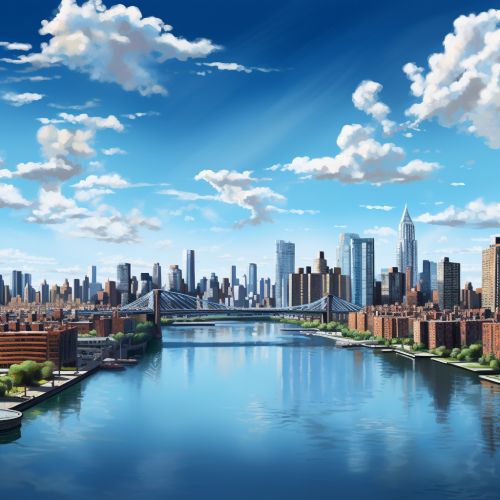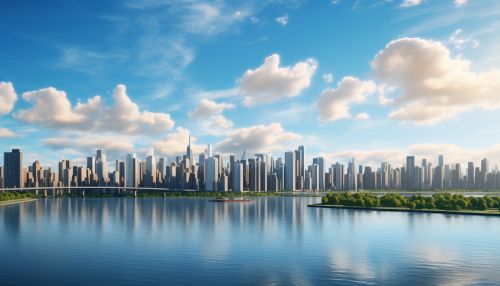East River
Geography
The East River is a salt water tidal estuary in New York City. The waterway, which is not a river despite its name, connects Upper New York Bay on its south end to Long Island Sound on its north end. It separates the borough of Queens on Long Island from the Bronx on the North American mainland, and also divides Manhattan from Queens and Brooklyn, which are also on Long Island.


Hydrology
The East River is navigable for its entire length of 16 miles. The lower half of the river is a tidal estuary, occupying the Hudson Fjord, an ancient riverbed that remained after the Hudson River shifted its course to the west. Tidal waters influence the river as far north as Triborough Bridge.
The river is a complex estuarine system consisting of a variety of open water and intertidal habitats, which supports a diverse assemblage of fish, birds, and invertebrates. The East River exhibits diurnal and seasonal variations in temperature, salinity, and dissolved oxygen levels.
History
The East River has played a crucial role in the history of New York City. During the colonial era, the river provided a convenient means of transport for goods and people between Manhattan, Long Island, and points north. The river's significance as a commercial waterway continued into the 19th and 20th centuries, when it became a busy thoroughfare for steamboats, barges, and ferries.
Infrastructure
The East River is spanned by several bridges, including the iconic Brooklyn Bridge and the Manhattan Bridge. These bridges are vital links in the city's transportation network, carrying millions of vehicles, pedestrians, and cyclists each year.
The river is also home to several power stations, including the Ravenswood Generating Station in Queens, which is one of the largest power plants in the United States. These facilities play a crucial role in meeting the city's energy needs.
Environmental Issues
The East River has faced numerous environmental challenges over the years, including pollution from industrial waste, sewage, and stormwater runoff. Efforts to clean up the river have been ongoing since the 1970s, and while significant progress has been made, the river's health remains a concern.
Recreation
Despite its challenges, the East River is a popular recreational destination. The river's waterfront is home to numerous parks and green spaces, and its waters are used for boating, fishing, and even swimming. The annual Great East River Swim attracts swimmers from around the world.
